history
« Older EntriesThe Muslim Brotherhood & The Cairo Codex 6
Saturday, July 29th, 2017
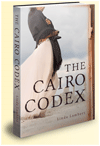 A review by The Historical Novel Society suggested: “ The author of The Cairo Codex shows a surprisingly in-depth, and even prescient, knowledge of modern Egypt and the conflict between the Muslim Brotherhood and other segments of society.”
A review by The Historical Novel Society suggested: “ The author of The Cairo Codex shows a surprisingly in-depth, and even prescient, knowledge of modern Egypt and the conflict between the Muslim Brotherhood and other segments of society.”
This was my goal: to chronicle the unexpected surge of the Brotherhood as well as the inherent dangers of its rise. While the organization was participating in the radicalization of other parts of the Middle East and favoring Shariah law, in Egypt their public stance was intended as a more accepted political influence.
The Cairo Codex also details the sources of the Coptic (Egyptian Christianity similar to Greek Orthodoxy)-Islamic tensions arising from history and beliefs. For instance, belief in the trinity, claim Muslims, suggest that Christians are polytheistic. The puzzlement to many is that all Religions of the Book began with Abraham. A common history.
By “prescient,” the Society meant a description of conditions that would lead to revolution. Set in the year 2006, the Codex anticipated the 2011 Revolution, which we will discover in Part 7, was not what it seemed.
Tags: The Cairo Codex
Posted in Arab press, Egypt, history, Muslim Brotherhood, political essay, The Justine Trilogy | No Comments » | Leave a Comment
The Muslim Brotherhood & The Cairo Codex 5
Thursday, July 27th, 2017
By the time I arrived in Egypt in 1989, the Brotherhood was steadily gaining seats in Parliament as an Independent Party (the Brotherhood label was forbidden under Mubarak also). Each year the numbers increased.
Brotherhood success, as described in my last installment and in The Cairo Codex, can be primarily attributed to two public factors: 1) Organization and discipline and 2) An important focus on social services.
Near the beginning of my service as a US state department envoy in Egypt, I asked the acclaimed sociologist Andrea Rugh, author of Reveal and Conceal and many other books on women in Egypt, how to reach the local communities directly. By directly, I meant without going through governmental agencies or even NGOs.
Andrea introduced my husband and I to Madam Ansaf (see photo with the three of us), an angel of mercy if there ever was one, who tended directly to the poor and offered micro-loans for everything from weddings to bean pots. It was through Madam Ansaf that we became intimately acquainted with the social services of the Brotherhood.
Next, the lead up to the 2011 revolution which was not as it seemed…
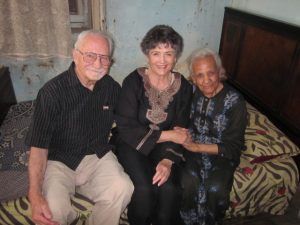
Tags: Andrea Rugh
Posted in history, Muslim Brotherhood, political essay, The Justine Trilogy | No Comments » | Leave a Comment
The Muslim Brotherhood & The Cairo Codex 4
Tuesday, July 25th, 2017
Meanwhile, in 1948, the Brotherhood was banned because of the 1948 assassination of Egypt’s prime minister, Mohamed Pasha. The assassination by a Brotherhood member was thought to be revenge for crackdowns on the organization. While the Brotherhood supported the revolution, the Junta that took charge immediately afterwards refused to share power. The Brotherhood reaction was a violent upheaval that destroyed massive amounts of property. So, when Nasser assumed the presidency in ’54 and experienced his own assassination attempt at the hands of the Brotherhood, he abolished the organization and imprisoned thousands.
By 1965, another assassination attempt caused yet another crackdown. However, the Egypt Brotherhood then largely rejected a more radical, violence ideology that was taking root in other countries and sought more peaceful strategies. By now, the organization well-organized, disciplined and largely professional.
Yet, radicals in the organization possessed and projected significant influence from the prisons. They were instrumental in training Hamas and Hezbollah in the art of securing mass loyalties. These were the same strategies working at home in Egypt: support the poor and helpless, provide essential medical care, pack warehouses with school uniforms and family necessities. It is not surprising that the Brotherhood was enlarging its following and surging in the polls by the late ‘80’s.

Tags: Hamas, Hezbollah, Nasser
Posted in Arab press, Egypt, history, Muslim Brotherhood, political essay, The Justine Trilogy | No Comments » | Leave a Comment
The Muslim Brotherhood & The Cairo Codex 3
Sunday, July 23rd, 2017
When my husband, Morgan, and I were moving to Egypt in 1989, we read the Alexandria Quartet by Lawrence Durrell. The first book is Justine, after which the protagonist of the Justine Trilogy is named. Durrell captured the blend of metaphysics (complex world views) and human psychology so pertinent to this part of the story. It vividly describes Egypt in the late 30’s and 40’s, the time when the Brotherhood is becoming more directly active in politics. Two engagements are of particular interest.
The Brotherhood’s most public venture into politics was involvement in the chasm between Palestine and Zionism. The organization raised money to support the worker revolt in Palestine. Many think of the conflict in Palestine as beginning with the 1948 sanctioning of statehood for Israel (a war to which the Brotherhood sent volunteers). Not so. It began in the 19th century with vast Jewish purchases of Palestinian lands. In The Cairo Codex we learn that Mary of Nazareth came from Palestine and finds pleasure in the freedoms she experiences in Egypt.
It is not surprising that Egyptians harbored strong sympathies for the Nazis during WWII. After all, they were being colonized by the British. And, anti-Semiticism was very strong. Hopeful that the war would bring the end to British colonization, the Brotherhood would have to wait for Nasser and the quiet revolution of 1952….

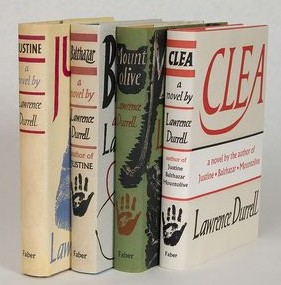
Tags: Lawrence Durrell, The Alexandria Quartet
Posted in Arab press, history, Muslim Brotherhood, political essay, The Justine Trilogy | No Comments » | Leave a Comment
How to Use a Novel as a Guidebook
Thursday, January 19th, 2017
Nicholas Noyes of the NY Times recently wrote a column by that name. He describes the fascinating of following in the footsteps of Oliver Twist–having seen the film as a 5-year-old. An American who grew up in London, he found new eyes as an adult by traveling Oliver’s journey.
My historical novels known as The Justine Trilogy are anchored in real places and times. Whether in Cairo (The Cairo Codex), Italy (The Italian Letters) or Taos (A Rapture of Ravens), each site is real–there for the picking, pleasures to be harvested. Delectable visits into living history. My posts entitled 72 Hours in Cairo (Parts 1-3) take you on that journey. Several posts on Italy and Taos tantalize you, I trust, to journey there.
What is your favorite historical novel? Have you planned that trip as yet? Add it to your bucket list.
Posted in A Rapture of Ravens, Book Tour, Egypt, Etruscans, Fiction, Florence, history, imagination, Italian Letters, Italy, Rome, Taos, The Justine Trilogy, Travel, trilogy, writing | No Comments » | Leave a Comment
The Justine Trilogy: the movies!
Monday, June 27th, 2016
Imagine a major earthquake in Cairo, anthropologist Justine buried alive, an ancient diary tumbling from the walls of a crypt. These are the promises of a major motion picture based on The Cairo Codex. In The Italian Letters, another ancient crypt
reveals the origin of Italians and the genealogy of the Virgin Mary. In a Rapture of Ravens, an avalanche in Taos, New Mexico, unearths and unravels the migration patterns of the Anasazi. Travel full circle back to the the Egyptian revolution and the faith of Justine’s lover. A gold mine for today’s special effects, these historical novels are unclose and personal with the struggle of today as well…the Muslim Brotherhood, religious conflict, challenging the truths of modern civilization.
Leonardo DiCaprio and Reese Witherspoon–where are you?
Posted in A Rapture of Ravens, D.H. Lawrence, Egypt, Etruscans, Fiction, genealogy, history, Italian Letters, motion pictures, Taos, The Justine Trilogy | No Comments » | Leave a Comment
The Thrill of Taos
Friday, June 5th, 2015
Returning to Taos is like returning to a home that never was…meaning that it has always seemed like home, but I didn’t grow up here. However, Morgan and I have spent many, many months here over the past five years—years bringing us into intimate contact with the balmy air that caresses our skin, the full moon rising over the Sangre de Cristo (isn’t there a full moon every night in Taos?), a scattered mosaic of clouds in a big sky over Sacred Mountain, the rich blend of cultures led by the Tiwa of the Taos Pueblo. More than a thousand years of history.
Much has happened in these five years: The D. H. Lawrence Ranch is now open—Kateri Tekakwitha is an authentic Saint—The World Heritage Taos Pueblo and Rancho de Taos Saint Francis Church continue to attract people from all over the world—The Egyptian Revolution took surprising, and not always pleasing, turns—the Taos economy is on the upturn. Tonight, the grandchildren of the original Art Colony founders describe 100 years of creative impulse here. Tomorrow, we hear the story of the 400 years of shared Native-Hispanic-Anglo history. Music is in the air everywhere you turn.
What perspective does time provide? Five years, 100 years, 400 years, a thousand years. A spiral of wisdom that is Taos.
The people of Taos have been so welcoming that the writing of A Rapture of Ravens: Awakening in Taos emerged with ease from the minds and hearts of these generous folk. Many of them will gather Friday, June 12th, at 6:30 at the Mabel Dodge Luhan estate for the “world release” party.
Posted in A Rapture of Ravens, Book Tour, D.H. Lawrence, Egypt, Florence, Frieda Lawrence, history, Taos, The Justine Trilogy, writing | No Comments » | Leave a Comment
Why Taos?
Monday, May 4th, 2015
Many know that Taos is a magical, historical, and stunning place. But why set the third novel in The Justine Trilogy there? After all, The Cairo Codex is set in Egypt; The Italian Letters in Italy.
Quite simply, D. H. Lawrence is buried in a little white chapel perched on the side of Lobo Mountain just outside of Taos. While he died of tuberculosis in the south of France in 1930, his wife Frieda’s lover brought his ashes back to Taos in 1936. Now, nearly 80 years later, the Ranch—owned by the University of New Mexico and closed for many years, has reopened.
When anthropologist Justine Jenner discovered letters from Lawrence in her great grandmother’s attic in Italy, she was compelled to follow him, to find out who he really was—and to find what he discovered about himself on the side of Lobo Mountain. In exploring the life of her great grandmother’s lover, Justine discovers herself as well.
One week from today, A Rapture of Ravens: Awakening in Taos will be released.
Posted in A Rapture of Ravens, D.H. Lawrence, Fiction, Frieda Lawrence, history, Taos, The Justine Trilogy | No Comments » | Leave a Comment
Who was the Virgin Mary? Really?
Wednesday, December 17th, 2014
The identity, personal diary, and genealogy of Mary of Nazareth and her son, Jesus, are expressed in the first two novels of the Justine Trilogy: the award-winning, The Cairo Codex and The Italian Letters (release, October, 2014). Perfect Christmas presents. The third in the trilogy, A Rapture of Ravens, will be released in June, 2015.
Tags: Christmas, codex, Egypt, history, Jesus, trilogy, Virgin Mary, writing
Posted in Books Inc., Egypt, Family, Fiction, genealogy, history, imagination, Italian Letters, trilogy, writing | No Comments » | Leave a Comment
Challenged by A City of Fallen Angels
Tuesday, October 7th, 2014
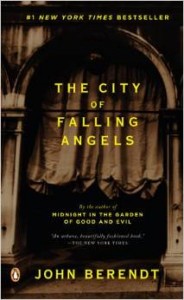 John Berendt is a truly unique writer. In Midnight in the Garden of Good and Evil he engaged a true story and characters into a richly texturized novel of grace and elegance. Memoir authors have borrowed this approach in recent years—to their detriment when the fiction is excessive—and to their glory when it worked.
John Berendt is a truly unique writer. In Midnight in the Garden of Good and Evil he engaged a true story and characters into a richly texturized novel of grace and elegance. Memoir authors have borrowed this approach in recent years—to their detriment when the fiction is excessive—and to their glory when it worked.
As I began to write The Italian Letters (just released), I turned to Berendt’s second such novel, A City of Fallen Angels, set in Venice for insights into the Italian culture and legal systems. I, in turn, invoked some of his approaches, particularly the use of true incidents and characters, into my novels (the Justine Trilogy). Berendt—and earlier Truman Capote (In Cold Blood)—offered gifts heretofore undiscovered. For me, these writing strategies created a format to bring together my background in history, non-fiction, and fiction. Thanks, John.
Posted in creativity, Fiction, history, Italy, trilogy, Truman Capote, Uncategorized, writing | No Comments » | Leave a Comment





 Conceptions of leadership have evolved, and Liberating Leadership Capacity captures these new ideas and provides a pathway to create sustainable systems of high leadership capacity. Available April 2016 from
Conceptions of leadership have evolved, and Liberating Leadership Capacity captures these new ideas and provides a pathway to create sustainable systems of high leadership capacity. Available April 2016 from 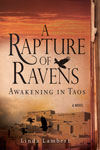 A sizzling new novel set in Taos, New Mexico. The third in the Justine Trilogy, preceded by the award-winning, The Cairo Codex and The Italian Letters. Buy it at your local independent bookstore,
A sizzling new novel set in Taos, New Mexico. The third in the Justine Trilogy, preceded by the award-winning, The Cairo Codex and The Italian Letters. Buy it at your local independent bookstore, 
